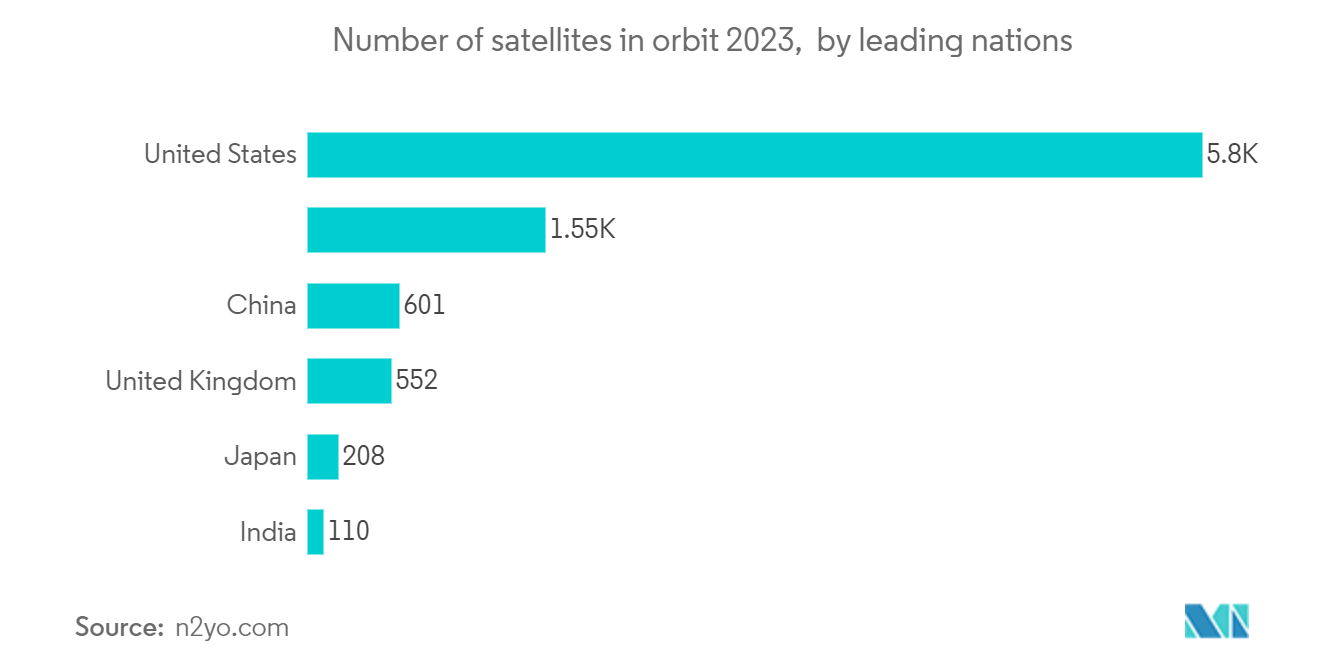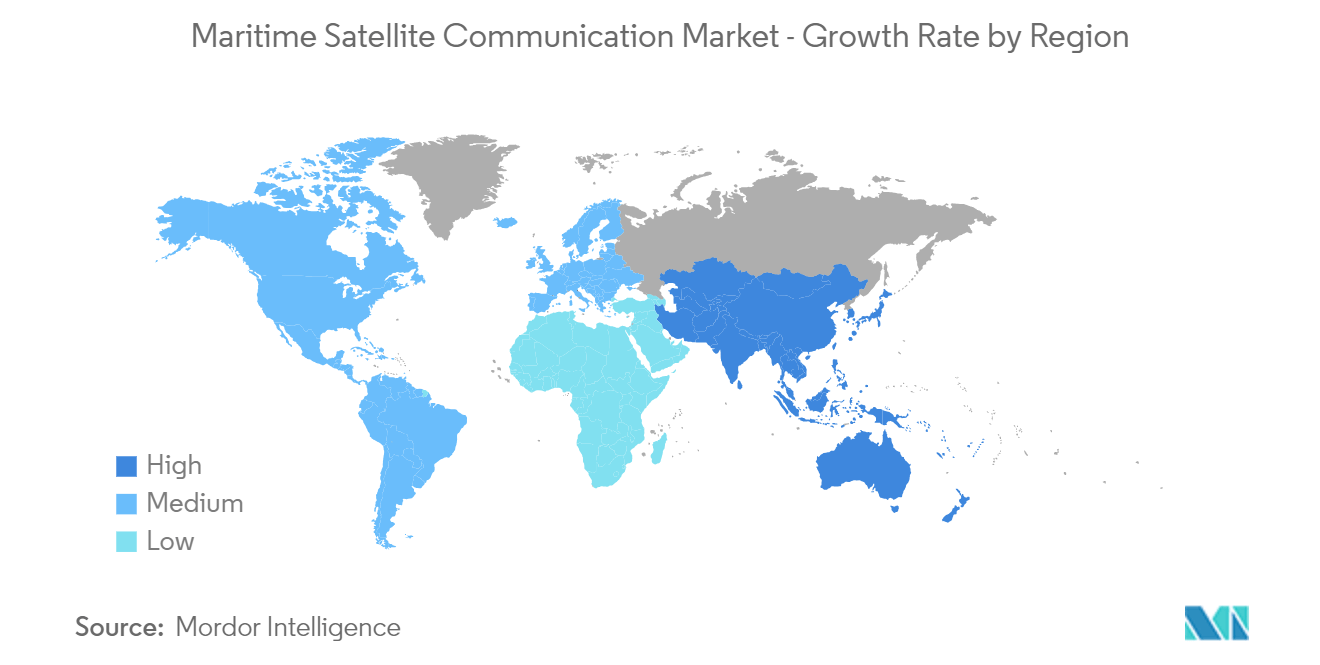Market Trends of Maritime Satellite Communication Industry
Maritime Satellite Communication Service Offering to Hold Significant Market Share
- The growing ecosystem of maritime transportation and its benefits with the circular economy, such as decreasing carbon footprints and other aspects, coincide with the organizational goals of the companies and demands for data-driven maritime services. These are best bolstered with the satellite communication providers offering services for busy vessel routes.
- The increasing traffic on specific routes creates a considerable requirement for maritime satellite communication services for multiple shipping and maritime service providers. According to the Ministry of Ports, Shipping, and Waterways (India), the volume of sea cargo traffic handled at the ports of the Indian state of Gujarat was over 500 million metric tons.
- Such high demands and handling of shipping across the ports invite maritime communication service providers to offer their reliable services for efficient and responsive satellite communication to track the shipments correctly and accurately, ensuring safe delivery of the shipments. In January 2024, Singtel, a prominent player in the maritime connectivity space, integrated Starlink's cutting-edge low-earth orbit (LEO) satellite broadband service into its offerings. This strategic move is poised to catalyze the adoption of digital solutions among ship owners and telecom operators. By leveraging this technology, they aim to innovate and harness advanced tools like artificial intelligence (AI), 5G, edge computing, and cloud-based solutions.
- Similarly, across the maritime industry in many different sectors, key players are working on advancements to provide reliable satellite communication services to their shipping counterparts. For instance, Tototheo Maritime is a prominent player in communication and maritime tech services. The company’s latest move, announced in January 2024, involves bolstering its suite of fixed and mobile connectivity solutions. These solutions are meticulously crafted to safeguard their clients' operations, ensuring seamless business continuity even in challenging scenarios. This strategic pivot underscores Tototheo Maritime's dedication to fortifying and enabling its clients' business endeavors with the latest communication tech.
- In different parts of the world, established wireless satellite communication service providers, including private players, are also entering the maritime communication spectrum through gradual advancements, providing profound connectivity to maritime customers. Such developments help build the ecosystem to bridge the gap between maritime satellite communication and the terrestrial bounds.
- For instance, in October 2023, OneWeb, the international low Earth orbit (LEO) communications network, announced its latest offering for the maritime industry, the "Try Before You Buy" maritime service. This service entitles maritime users to experience OneWeb's enterprise-grade flexible connectivity packages at sea, providing high-speed connectivity of over 100 Mbps. With 634 satellites in orbit, the OneWeb constellation is now complete and entirely operational down to 35 degrees latitude.

Asia-Pacific to Witness Significant Market Growth
- Due to the rising use of waterways for transportation, the increasing government initiatives, and the expanding use of satellite communication, the Asia-Pacific region (predominantly in India, China, Japan, Malaysia, and Singapore) is anticipated to be the fastest-growing segment in the maritime analytics market. In addition, the region's abundance of significant solution and service companies may foster market progress in Asia-Pacific.
- In May 2024, KT SAT, South Korea's leading satellite communications provider, and Rivada Space Networks inked an MoU. Their collaboration aims to revolutionize connectivity for both enterprise and government clients, with a particular focus on expanding their reach in the Asia-Pacific region and beyond. The envisioned 'outernet' holds immense promise for these clients. It can bolster security for banks and multinational corporations with dispersed offices, offer enhanced bandwidth for oil and gas exploration, ensure seamless connectivity for shipping and fleet management, and even facilitate the expansion of 5G satellite backhaul networks for cellular operators.
- According to the Broadband India Forum, the new standard for Interface Requirements for Communication & Broadcast Networks for fixed-satellite service-FSS/broadcasting satellite service-BSS (mandatory technical requirements) may authorize the ground segment very-small-aperture terminal (VSAT) participants to take advantage of the latest SATCOM technologies (BIF).
- As per the Ministry of Ports, India's major ports handled 819.3 of total cargo in FY 2023-2024. According to IBEF, approximately 95% of India's merchandise trade is done through seaports. The country is one of the most significant peninsulas in the world, with a coastline of 7,516.6 km and 200 major and non-major ports. Hence, the rising number of ports in the region is creating a requirement for monitoring shipping-related activities, which may fuel the growth of the Asia-Pacific satellite communication market.
- In May 2024, Cobham Satcom unveiled its latest offerings, the SAILOR XTR 100 TVRO and SAILOR XTR 120 TVRO antennas. With Cobham Satcom's extensive experience in the Sea Tel TVRO line and incorporating advanced technology from the SAILOR XTR VSAT platform, these antennas promise heightened performance and expanded capabilities. They are designed to cater to a broad spectrum of vessels, ranging from superyachts and cruise ships to merchant vessels.


